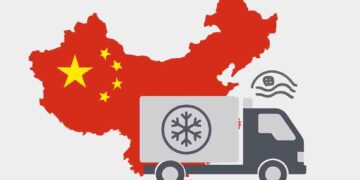Strengthening Control Over ODS and HFCs
On April 9, 2025, China’s Ministry of Ecology and Environment, together with the National Development and Reform Commission, the Ministry of Industry and Information Technology, the Ministry of Commerce, and the General Administration of Customs, jointly issued the “National Plan for Implementing the Montreal Protocol on Substances that Deplete the Ozone Layer (2025–2030)”.
The new plan aims to comprehensively strengthen the management of ozone-depleting substances (ODS) and hydrofluorocarbons (HFCs), while promoting green, low-carbon, and high-quality industrial development.
Scope of Controlled Substances
The plan lists nine types of substances for control:
- Chlorofluorocarbons (CFCs)
- Halons
- Carbon tetrachloride (CTC)
- Methyl chloroform
- Hydrobromofluorocarbons (HBFCs)
- Bromochloromethane
- Methyl bromide
- Hydrochlorofluorocarbons (HCFCs)
- Hydrofluorocarbons (HFCs)
The plan distinguishes between controlled uses and raw material uses, and explicitly bans the production and use of CFCs, Halons, CTC, methyl chloroform, HBFCs, bromochloromethane, and methyl bromide for controlled applications, except for exempted uses.
Major Policy Measures
1. Strengthening Source Control
- Implementing production and sales quota licensing for units producing controlled substances.
- Requiring sales units to strictly classify and report sales by substance use.
- Tightening controls over by-product substances like HFC-23, promoting capture and resource utilization technologies.
2. Strengthening Use Process Control
- Licensing or filing management for units using HCFCs and HFCs for controlled applications.
- Key sector timelines:
- PU foam, extruded polystyrene foam, and industrial cleaning industries: Ban HCFCs starting July 1, 2026.
- Other sectors: Complete HCFC phase-out by 2030.
- Automotive air conditioning: From July 1, 2029, new M1 vehicles must use refrigerants with GWP ≤150.
3. Enhancing End-of-Life Management
- Strengthening oversight of repair, recovery, recycling, and destruction of controlled substances in refrigeration, fire suppression systems.
- Promoting traceability systems for recovered refrigerants.
4. Tightening Import and Export Management
- Continuing quota licensing for imports and exports.
- Banning imports of HCFCs and eliminated substances except for exempted uses.
- Enhancing illegal trade detection through strengthened customs collaboration.
Specific Restrictions for New Refrigeration and Air Conditioning Products
| Sector | Product Type | Start Date | HFC Limitation |
|---|---|---|---|
| Automotive | M1 vehicle air conditioners | July 1, 2029 | GWP > 150 prohibited |
| Household Appliances | Refrigerators, freezers | January 1, 2026 | HFCs banned |
| Household Air Conditioners | Domestic room air conditioners (excluding VRF systems) | January 1, 2029 | GWP > 750 prohibited |
| Commercial Refrigeration | Small air conditioners, ducted systems (≤12kW) | January 1, 2029 | GWP > 750 prohibited |
| Industrial Refrigeration | Other refrigeration systems | January 1, 2029 | GWP > 2500 prohibited |
Export Perspectives
China is a major producer and exporter of HCFCs and HFCs, though exports are expected to decline steadily under tightened domestic regulations and global compliance with the Kigali Amendment to the Montreal Protocol.
Key export markets include India, Southeast Asia, Africa, and parts of South America.
Competitor and Industry Impact
Leading chemical producers such as Dongyue Group, Sinochem Lantian, and Zhejiang Juhua will be directly impacted.
Producers investing early in natural refrigerants (e.g., ammonia, CO₂, hydrocarbons) and low-GWP HFOs are likely to gain market share amid tightening restrictions.
Small Upsell Paragraph:
Get expert coverage of China’s chemical regulatory trends with China Informatics.
Stay ahead on environmental policy shifts, market impacts, and compliance strategies.
[Subscribe Now] for premium insights.












